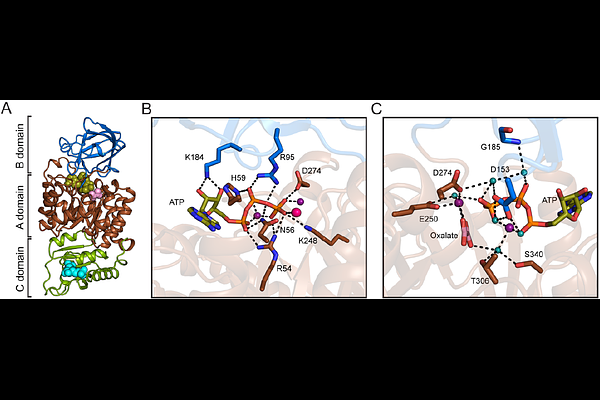Structural basis of nucleotide selectivity in pyruvate kinase

Structural basis of nucleotide selectivity in pyruvate kinase
Taguchi, A.; Nakashima, R.; Nishino, K.
AbstractNucleoside triphosphates are indispensable in numerous biological processes, with enzymes involved in their biogenesis playing pivotal roles in cell proliferation. Pyruvate kinase (PYK), commonly regarded as the terminal glycolytic enzyme that generates ATP in tandem with pyruvate, is also capable of synthesizing a wide range of nucleoside triphosphates from their diphosphate precursors. Despite their substrate promiscuity, some PYKs show preference towards specific nucleotides, suggesting an underlying mechanism for differentiating nucleotide bases. However, the thorough characterization of this mechanism has been hindered by the paucity of nucleotide-bound PYK structures. Here, we present crystal structures of Streptococcus pneumoniae PYK in complex with four different nucleotides. These structures facilitate direct comparison of the protein-nucleotide interactions and offer structural insights into its pronounced selectivity for GTP synthesis. Notably, this selectivity is dependent on a sequence motif in the nucleotide recognition site that is widely present among prokaryotic PYKs, particularly in Firmicutes species. We show that pneumococcal cell growth is significantly impaired when expressing a PYK variant with compromised GTP and UTP synthesis activity, underscoring the importance of PYK in maintaining nucleotide homeostasis. Our findings collectively advance our understanding of PYK biochemistry and prokaryotic metabolism.